
A traditional extensive aquaculture system along the border of the Venetian Lagoon.
Amina Chouairi
2020
The fishing valleys aquaculture system is located in the Venetian Lagoon, Veneto region, Italy. Their first traces have been found since the first 11th century A.D.
Nowadays this extensive fish cultivation system is spread over 8500 ha. of the current lagoon, and its main elements are the fishing ponds, the embankments separating the valleys from the lagoon, the mansions, and the waterworks able to calibrate the amount of fresh water and salt water to introduce in the valleys.

The fishing valley master, capovalle, the fishing valley workers and the guardian are the three fundamental figures for the fishing valley management in the Venetian Lagoon. The capovalle is the chief of the fishing valleys, regulating the water regime and employing of seasonal workers; the workers are in charge of different managing activities; the guardian monitors the valley daily.
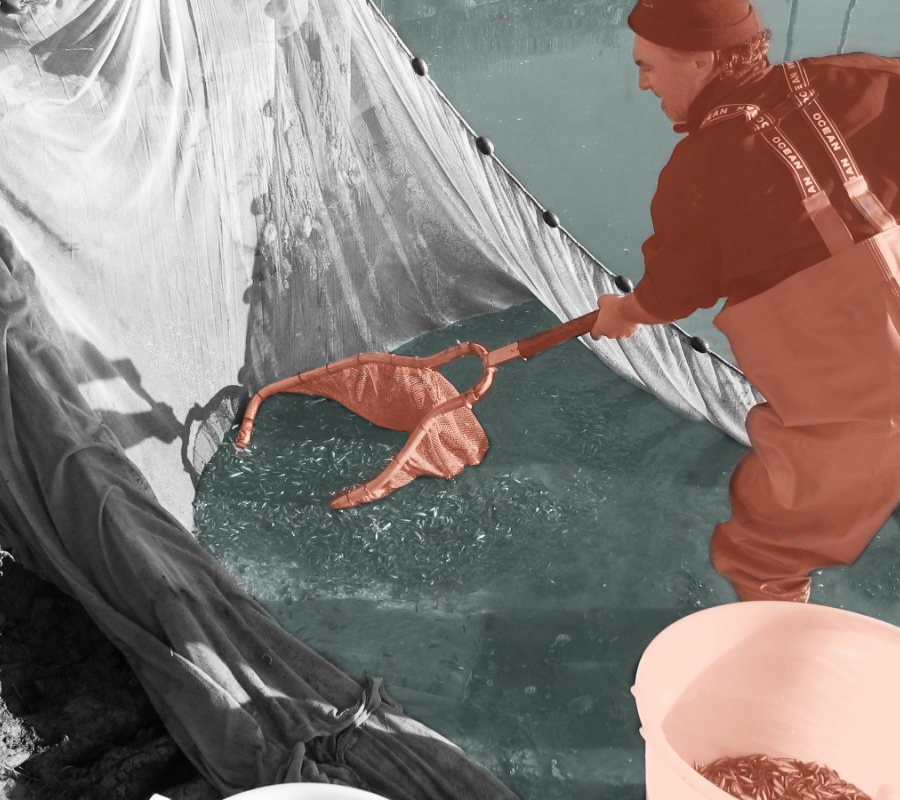
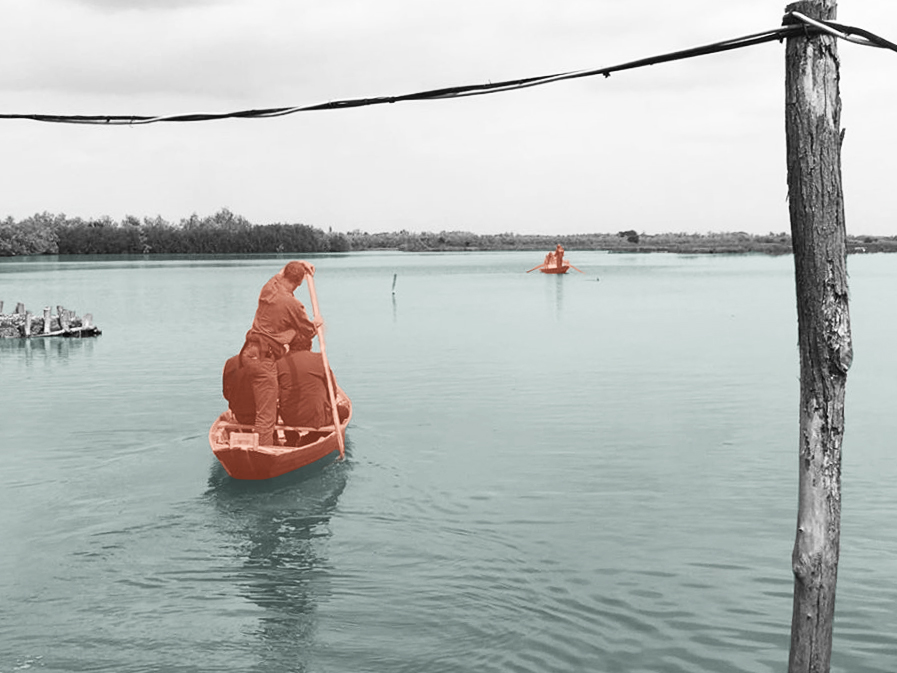
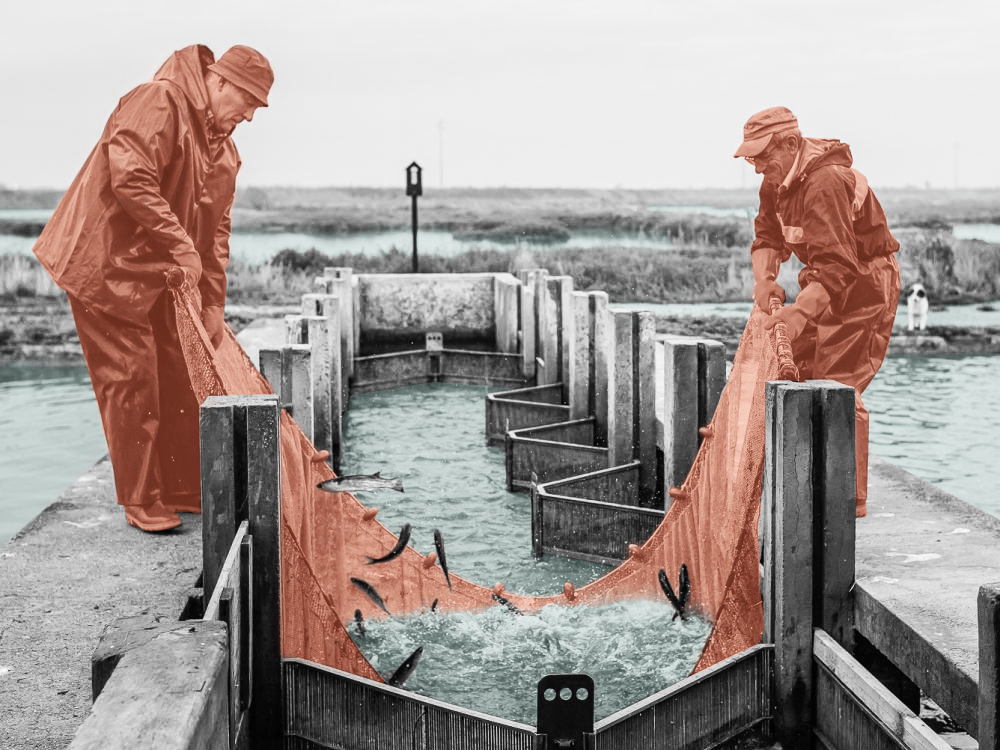
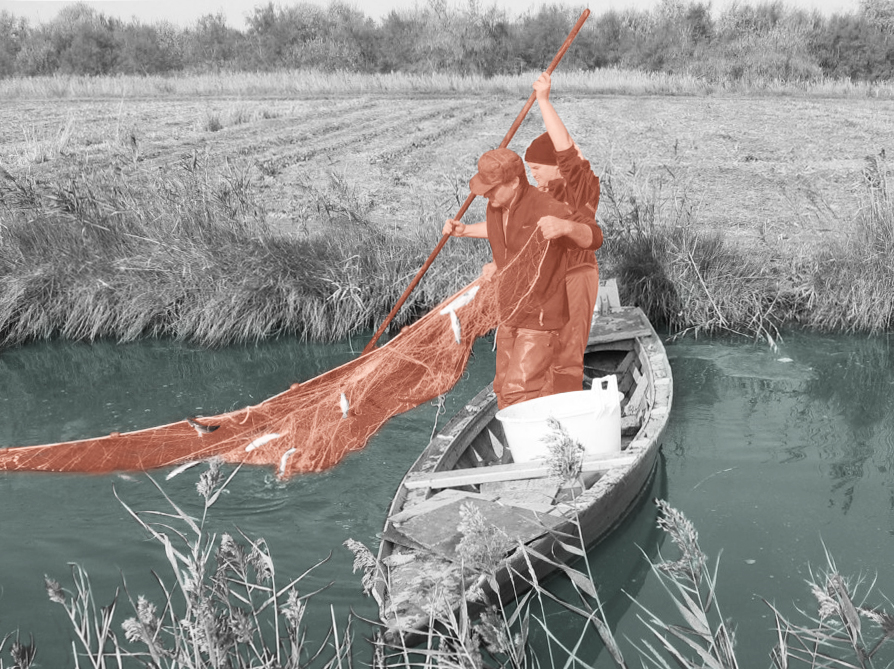
Circular Stories
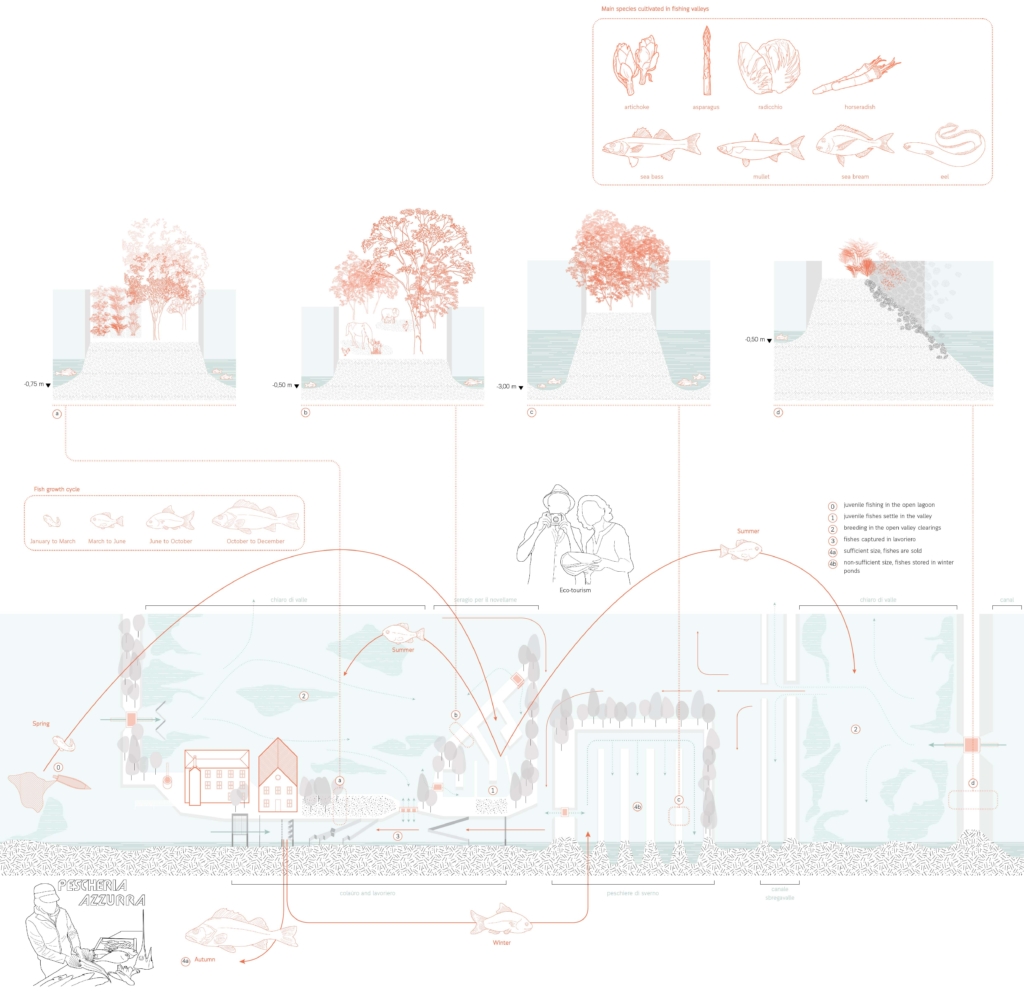
Since the first decades of the 20th century, the fishing valleys can be addressed as an extensive polyculture, where the main activity of fish farming has been juxtaposed by farm animals breeding (as horses, sheep, hens, goats, cows, etc.), vegetable gardens and orchards (cultivating horseradish, radicchio, asparagus, artichoke, etc.), reeds, mulch, fertilizer
and hay production.
Despite its relatively low rates in terms of production, compared to other intensive aquacultures, this activity is associated with reasonably low management costs: fishing valleys in the Venetian Lagoon are mainly family farms employing seasonal workers during the busiest seasons
(spring and autumn). Recently, many of the fishing valleys have implemented their accommodation activity, providing a slower and lighter touristic alternative to discover the outer lagoon territory, in counter-trend to the mass tourism suffocating the historical centre of Venice.
